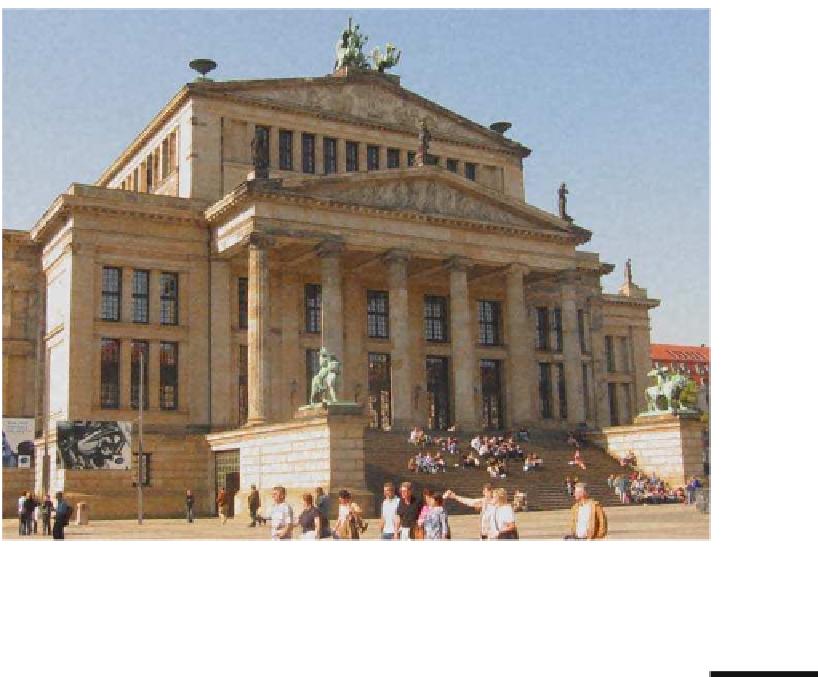Graphics Reference
In-Depth Information
Figure
.
.
Local quadratic reconstruction of the noisy image from Fig.
.
. See online version for
colors
Concluding Remarks
8.5
In this chapter we have presented a novel adaptive smoothing procedure that has
some remarkable properties and a potentially wide range of applications. We have
illustrated, using a variety of examples, that the approach is essentially dimension-
free;itworksin
-D,
-Dand even
-Dsituations. Itautomatically recoversregions of
homogeneity with respect to a local constant or local polynomial model.As a conse-
quence, borders between homogeneous regions are preserved and even enhanced. If
the specified local model allows for a good approximation of the unknown function
θ, this also permits a significant reduction in variance without introduction of bias.
In areas where the function θ is smooth, the procedure based on a local constant
model is, for large h
max
, likely to produce a local constant approximation. Neverthe-
less, such a bias introduced at a certain iteration k will be balanced by the variability
of the estimates at this iteration. he effect can also be avoided by choosing an ap-
propriate value of h
max
.
InPolzehl andSpokoiny (
),theoretical resultsareobtained forthecasewhere
P
isa one-parameter exponential family. hisincludesresults on the propagation, or
freeextension,ofweightswithininteriorsetsofhomogeneousregionsandratesofes-
timation in regions where the parameter function θ is smooth. Conditions are given
for the separation of two homogeneous regions depending on their sizes and con-

